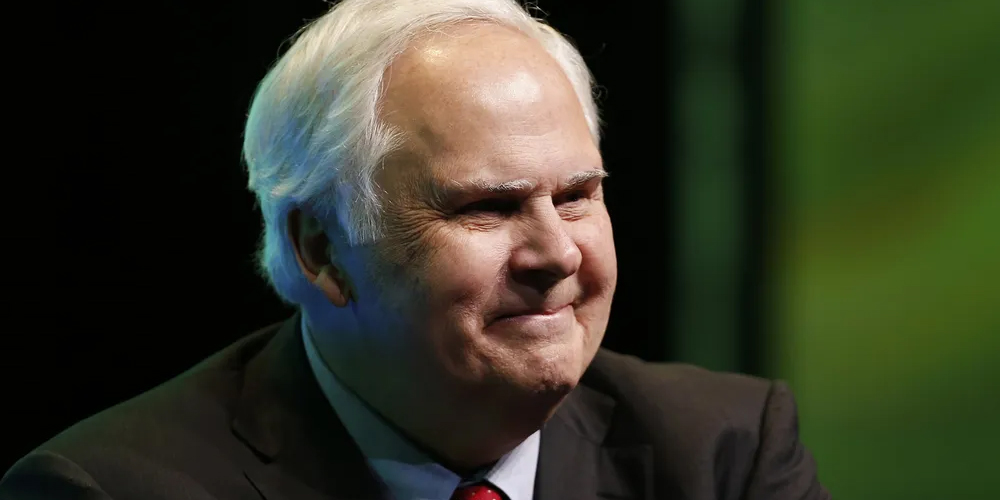Mary Barra: Pioneering Change in the Automotive Industry
Introduction
Mary Barra stands at the forefront of the automotive industry as the CEO of General Motors (GM). She is not just the first woman to lead a major global automaker; she is also a catalyst for change within the industry. Under her leadership, GM has embraced innovation and sustainability, setting new standards for what a modern automotive company can achieve. This article explores her journey, leadership style, and the transformative impact she has made on the automotive landscape.
Early Life and Education
Mary Barra was born on December 24, 1961, in Royal Oak, Michigan. Growing up in a family of car enthusiasts, her father worked as a die maker at GM, which influenced her early interest in the automotive world. From a young age, she was exposed to the intricacies of vehicle manufacturing and the significance of the automobile industry in American culture.
Barra attended Kettering University, where she earned a degree in electrical engineering. This technical background equipped her with a solid understanding of the engineering principles that underpin automotive design and manufacturing. Following her undergraduate studies, she pursued an MBA from Stanford University, where she honed her leadership and business acumen. This blend of technical expertise and business knowledge would prove invaluable as she navigated her career at GM.
Career at General Motors
Barra began her career at GM in 1980 as a co-op student, working in various engineering roles. This initial experience provided her with invaluable insights into the company’s operations. Over the next few decades, she held numerous positions, including roles in product development and human resources. Each position equipped her with a deeper understanding of the complexities involved in the automotive industry.
In 2014, Barra made history by becoming the first female CEO of a major global automaker. Her appointment was groundbreaking, not just for GM but for the entire industry. She faced immediate challenges, including a series of recalls that affected GM’s reputation. However, her decisive leadership during this crisis showcased her ability to steer the company through turbulent waters.
Leadership Style
Mary Barra’s leadership style is marked by transparency, collaboration, and innovation. She emphasizes the importance of listening to her team and values diverse perspectives. Barra has created a culture of inclusivity at GM, where employees feel empowered to share their ideas and concerns. This open dialogue fosters innovation and encourages employees to think creatively.
Barra’s commitment to a flat organizational structure contrasts with traditional hierarchical models. This approach allows for quicker decision-making and responsiveness to market changes. By prioritizing collaboration, Barra ensures that GM can adapt to the fast-paced automotive landscape. Her leadership philosophy promotes a sense of ownership among employees, which is crucial in a rapidly evolving industry.

Embracing Technology and Innovation
Under Barra’s leadership, GM has made significant strides in technology and innovation. She has spearheaded the company’s commitment to electric vehicles (EVs) and autonomous driving technologies. Barra envisions a future where GM is a leader in sustainable transportation. This vision includes investing billions in EV production and technology development.
In 2020, Barra announced GM’s plan to become a carbon-neutral company by 2040. This ambitious goal includes a commitment to an all-electric future, where every vehicle sold will be zero-emissions. The introduction of models like the GMC Hummer EV and the Chevrolet Bolt EV illustrates GM’s dedication to this transition. Barra’s proactive approach has positioned GM as a pioneer in the EV market.
Moreover, Barra understands that technology is not just about manufacturing. It encompasses data analytics, connectivity, and customer experience. GM has invested in partnerships with tech companies to enhance its capabilities in these areas. For instance, the collaboration with Microsoft aims to improve in-car technology and data-driven services, ensuring that GM stays relevant in an increasingly digital world.
Sustainability Initiatives
Mary Barra has prioritized sustainability as a core value for GM. The company’s commitment to becoming carbon neutral by 2040 extends beyond vehicle production. GM aims to reduce its environmental impact throughout its supply chain and operations. This includes using renewable energy sources in manufacturing plants and investing in sustainable materials.
Barra also advocates for responsible recycling practices. GM’s focus on circular economy principles aims to minimize waste and maximize resource efficiency. By leading these sustainability initiatives, Barra is setting a new standard for the automotive industry, encouraging competitors to follow suit.
Furthermore, Barra’s commitment to sustainability is evident in GM’s electrification strategy. The company is not only producing electric vehicles but also investing in battery technology to ensure efficient energy use. These efforts contribute to a reduction in greenhouse gas emissions and promote a cleaner environment.
Challenges and Controversies
Like any transformative leader, Mary Barra has faced her share of challenges. The transition to electric vehicles presents numerous obstacles, including supply chain constraints and market competition. Additionally, GM has dealt with recalls and safety concerns, which have tested Barra’s leadership skills. Her ability to confront these issues head-on has demonstrated her resilience and commitment to the company’s long-term success.
Barra’s approach to transparency during these challenges has earned her respect. She has openly addressed criticisms and worked to rebuild trust with consumers. By prioritizing safety and accountability, Barra has strengthened GM’s reputation and positioned the company for future growth.
One notable controversy was the criticism GM faced for its slow response to the rise of electric vehicles compared to competitors like Tesla. Barra acknowledged the missteps and has since accelerated GM’s EV initiatives, reinforcing her commitment to innovation and responsiveness to market demands.
Impact on the Automotive Industry
Mary Barra’s influence extends beyond GM; she has inspired a new generation of women in leadership roles. Her achievements challenge the traditional perceptions of women in the automotive industry. Barra actively promotes diversity and inclusion, advocating for initiatives that empower women in STEM fields.
As a mentor and role model, Barra encourages young women to pursue careers in engineering and leadership. Her presence in the industry serves as a beacon of hope for aspiring female leaders, demonstrating that success is attainable.
Barra has also taken on leadership roles in various industry organizations. Her participation in initiatives promoting diversity within the automotive sector highlights her commitment to fostering a more inclusive industry. This effort is crucial in attracting diverse talent and ensuring that the automotive industry reflects the demographics of its customer base.
Conclusion
Mary Barra is not just a leader; she is a transformative figure in the automotive industry. Her commitment to innovation, sustainability, and diversity sets a new standard for leadership. As GM continues to evolve under her guidance, Barra’s vision will undoubtedly shape the future of transportation and inspire future generations of leaders.
References
1. General Motors Corporate Website
2. Automotive News
3. Forbes Articles on Mary Barra
4. Industry Reports on Electric Vehicles







